
All categories
Featured selections
Trade Assurance
Buyer Central
Help Center
Get the app
Become a supplier

(1598 products available)
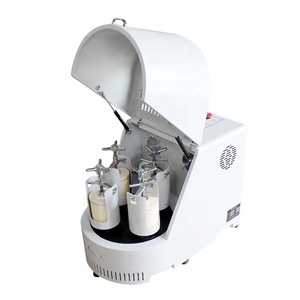
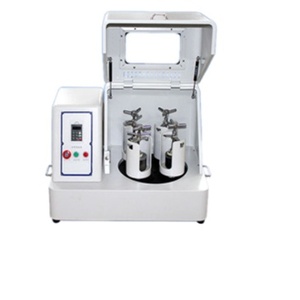

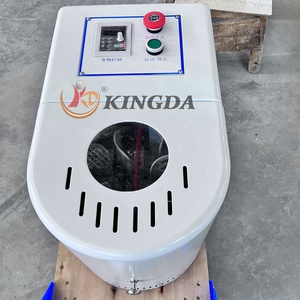

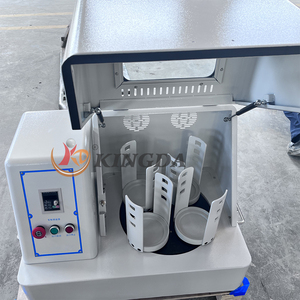


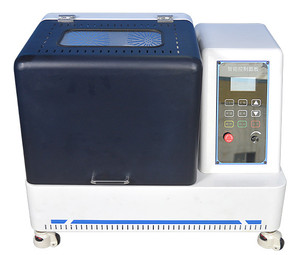
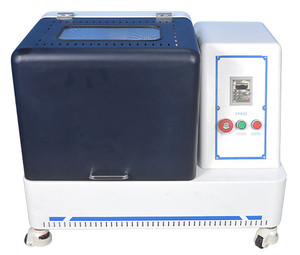






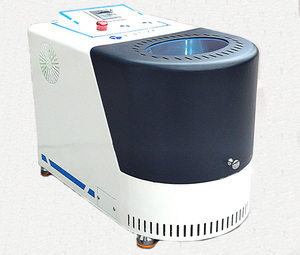


A laboratory bead mill is designed to perform high-energy dispersing and grinding for samples in small quantities. It is a suitable replacement for a homogenizer when achieving a fine particle or droplet size is essential. The laboratory bead mills are commonly used for the following applications:
There are two main types of laboratory bead mills, namely the horizontal and the basket bead mill.
The basket bead mill consists of a cylindrical vessel using a rotating shaft with dispersion discs inside. It is one of the oldest mills developed to grind materials. The working principle of the basket mill is that the material is forcefully circulated in the grinding chamber. This force creates shear forces and compressive forces amongst the beads and material, which leads to the breakdown of the material.
The basket is immersed in a liquid reservoir of bead material, which acts to further create shear stress and emulsion within the sample. Once the sample reaches the required fineness, it is removed from the vessel.
Some advantages of the basket bead mill include low operational costs and easily scalable technology. The disadvantage of this type of bead mill is that it has a lower throughput when compared to other bead mills and therefore is not ideal for high-volume milling.
The horizontal bead mill consists of a cylindrical chamber that uses a stirrer to move the beads and material in the chamber. Some horizontal bead mills use discs to stir the beads, while others use a rod. The working principle of horizontal bead mills is that the stirrer creates a shearing force as it moves within the chamber. This shearing force further pushes the beads against the material to be ground, creating a finer product.
Once the material is ground, it is pumped out with the help of a pump. The major advantage of the horizontal bead mill is that it can achieve a fine particle size almost double the fineness that can be obtained with a basket bead mill. Furthermore, the horizontal bead mill has a higher throughput, thus making it more efficient than the basket mill at processing large volumes of material. The horizontal bead mill can also process viscous materials that other bead mills cannot process. The one drawback of the horizontal bead mill is that it is more expensive to operate and maintain.
These two types of bead mills can be found in different industries, such as the following:
Laboratory bead mills provide product development, competiveness, and cost-effective solutions to industries that need to grind, disperse or homogenize products of varying viscosities and consistencies.
One primary industry that uses these mills is the coating one, which includes paint, varnish, lacquer, and ink manufacturers. The mills help grind pigment particles in inks and coatings to achieve the desired color strength and quality.
Cosmetic and personal care product manufacturers also use the laboratory bead mill to work on the finer, more aesthetically pleasing, and effective lotions and creams.
The food and beverage industry, which includes juices, sauces, and other food products, benefits from the milling machines as they help improve the stability, texture, and taste of products. In addition, pharmaceutical manufacturers use the mill to reduce particle sizes and create uniform suspensions and emulsions for optimal drug delivery systems.
Other industries the bead mill helps improve are chemical processing industries like agrochemicals, chemicals used in the construction industry, adhesives, and resin products.
Product development, scale-up, and quality control are critical aspects of the bead mill machine. Most manufacturers use the machine to develop new formulas or products and ensure the quality and safety of existing ones. The same goes for optimizing existing formulations so that resources are not wasted when the final products are produced.
Laboratory bead mills are manufactured to meet different sample volumes and disperse various substances. When buying laboratory bead mills, buyers should get the equipment that suits their needs.
Product viscosity range
The product viscosity range is a key feature to consider when choosing bead mills. Higher viscosity materials may require powerful dispersion forces and higher energy for processing. Ensure the mill has adequate power and motor to manage the intended material viscosity.
Time-saving
Consider the time it takes the bead mill to process the intended material. Some bead mills lack efficient cooling systems; hence, the milling process can take a while, which may lead to overheating of the product, the stirrer, and the beads. Select a bead mill with an efficient cooling system to shorten the processing time.
Maintenance
Consider the maintenance requirements of the bead mill. Some bead mills require regular maintenance and complex servicing. Choose the bead mill that has low maintenance demand and simple servicing requirements. Furthermore, check the availability of spare parts.
Product discharge method
Buyers can choose bead mills discharge methods depending on the required efficiency. Choose the mill that can achieve the desired processing efficiency and separations within the preferred time length.
Degassing
Apart from the milling process, the bead mill also disperses materials. Degassing is an important feature in the dispersion process that eliminates bubbles resulting from shear forces. Excess bubbles in a material can affect the product's quality. Consider a bead mill with degassing features, especially when dealing with important product specifications.
Accessibility
Accessibility is an important feature when milling fragile and expensive materials. Some bead mills have strainers that limit accessibility. In some cases, work reveals the prerequisite milling processes may require extra strainers. Consider the milling machine that further access easily to save time and resources.
Feeding methods
Special bead mill feeding methods are suited for unique processing requirements. Consider a bead mill that matches the desired feeding method.
Stirrer speed
Speed adjustment is an important feature when processing different types of materials. It is important to choose a laboratory bead mill with a stirrer that adjusts speed.
Q1: What are the primary components of a laboratory bead mill?
A1: The main components of a bead grinder include the mill chamber, agitator, bead separation device, pump or recirculation system, and control system.
Q2: What types of beads are used in laboratory bead mills?
A2: Laboratory bead mills use different types of beads, such as glass, zirconia, ceramic, and polymer, depending on the material being processed.
Q3: What is the principle of a bead mill?
A3: A bead mill works by the collision of beads and material under high-speed agitation to achieve the dispersion and grinding of the material.
Q4: What is the difference between a bead mill and a ball mill?
A4: The bead mill is more suitable for the dispersion and grinding of fine particles, while ball mills are generally suitable for coarse grinding.